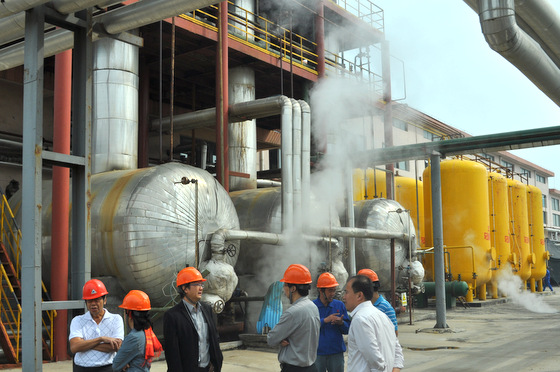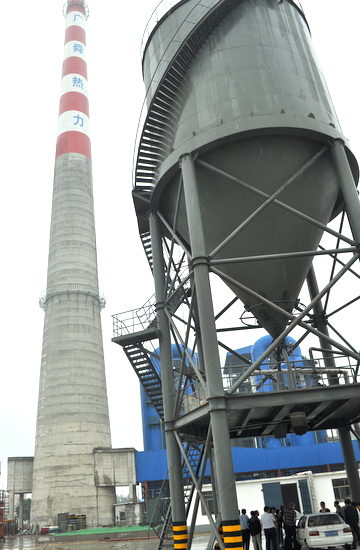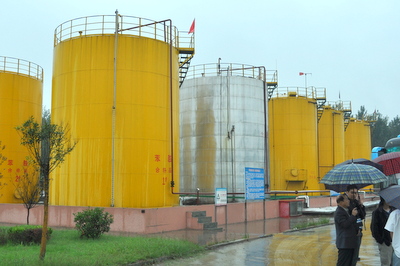|
|
Price of aniline, a raw material, spirals down
First, on the subject of falling aniline price.
Within a short period, the price of aniline has fallen by 17%, from RMB 11,328 in 3Q 14 to RMB 9,367 on 21 Nov 14.
Aniline is an important raw material for making rubber accelerators. How much does it account for the cost of production of accelerators?
Two published sources suggest that the figure is around 30%.
» First, page 87 of Sunsine’s 2013 annual report states that if aniline price decreased by 10%, net profit would rise RMB 30m higher.
As the RMB 30m net profit is equivalent to RMB 40m pre-tax, the amount spent on aniline in 2013 was RMB 400m, which was 30% of cost of goods sold of RMB 1,388m.
» Second, page 56 of Sunsine’s IPO prospectus indicates that aniline formed around 31% of the cost of goods sold:
|
The following are rubber accelerator price and cost data (per tonne) in 3Q 14:
|
The 17% aniline price fall will result in aniline input cost being reduced by RMB 800. The benefit to rubber accelerator producers is temporary, as tyre companies who are their customers will expect a price adjustment to their purchases.
If the ASP of rubber accelerators is cut by the same amount, Sunsine's gross profit will remain intact.
 China Sunsine's plant in Weifang producing rubber accelerators for use in tyre manufacturing in China and globally. NextInsight file photo.
China Sunsine's plant in Weifang producing rubber accelerators for use in tyre manufacturing in China and globally. NextInsight file photo.Strong profit contribution in 2015 from:
» extra 12K tonnes of accelerators
» extra 15K tonnes of 6PPD
» utility cost savings
The sale of rubber accelerators accounted for Sunsine’s very strong RMB 83m profit in 3Q 14, which translated into a staggering 35% ROE. In comparison, profit for the whole of 2013 was RMB 77m only.
If Sunsine earns RMB 83m each in 3 quarters and a lower RMB 50m in the first quarter (on account of the Chinese New Year holidays), it will end up with a full-year profit of RMB 299m.
A much lower profit, say RMB 235m, as forecast by Amfraser, is more realistic. This profit will be equivalent to an attractive EPS of 10.5c (translating into a PE of about 4X at the current share price level of 42 cents).
Sunsine is set to maintain good profits even with a deeper ASP cut because next year, it will have the capacity to produce another 12,000 tonnes of rubber accelerators (MBTS and DCBS) and another 15,000 tonnes of 6PPD (a high-grade antioxidant used in tyre manufacturing).
 This new coal-fired utility plant in Shanxian produces high-pressure steam to drive turbines to generate electricity. The resulting low-pressure steam will be channelled to dry moist rubber accelerators. There will be surplus electricity and steam for sale to other factories in the same industrial estate. All in, China Sunsine will reap RMB25-30 million in annual cost savings and profit, according to CIMB estimates. NextInsight file photo.Furthermore, for the first time, it will enjoy substantial cost savings from the start of operations of its steam/electricity plant (picture on the right).
This new coal-fired utility plant in Shanxian produces high-pressure steam to drive turbines to generate electricity. The resulting low-pressure steam will be channelled to dry moist rubber accelerators. There will be surplus electricity and steam for sale to other factories in the same industrial estate. All in, China Sunsine will reap RMB25-30 million in annual cost savings and profit, according to CIMB estimates. NextInsight file photo.Furthermore, for the first time, it will enjoy substantial cost savings from the start of operations of its steam/electricity plant (picture on the right).
It should be noted that it cost Sunsine very little to install the production lines for the 12,000 tonnes of accelerators because the supporting infrastructure was put in place earlier.
Sunsine's recent announcement said its 4,000- tonne MBTS line cost RMB 3.5m, and the 8,000-tonne DCBS line RMB 9m.
The potential output from these two lines has an aggregate value of at least RMB 240m on the assumption that a tonne of these products sells for a low RMB 20,000 (against RMB 22,800 ASP in 3Q 14).
This demonstrates one of Sunsine’s competitive advantages – lower unit production cost with capacity expansion.
Another advantage is its research in minimising its waste generation in a cost-efficient manner. An upshot of this is the cleaner production process for DCBS, which is set to earn a good return on this chemical that is short in supply.
Better outlook for 6PPD
The journey to the new output of 15,000 tonnes of 6PPD was a long one, and it demonstrates how arduous it is to sell a new product to tyre manufacturers who are quality-conscious.
The technology for making 6PPD is much more complex than rubber accelerators. After mastering the skills, Sunsine decided to build a 30,000-tonne 6PPD factory in two phases, with an initial capacity of 15,000 tonnes at a cost of RMB 120m.
The first phase was completed in 2011. Accreditation by tyre makers was slow as test tyres had to be exposed to heat and ozone for long periods to determine the efficacy of Sunsine’s 6PPD. (In comparison, accreditation of rubber accelerators is easier as their effect in shortening the reaction time between rubber and sulphur can be assessed more quickly.)
Although Sunsine has not disclosed it, the 6PPD segment was unlikely to have been profitable with the low utilisation of phase 1 capacity.
When phase 1 capacity is used up and phase 2 kicks in, unit production cost will fall resulting in a decent profit.
Recent story: CHINA SUNSINE: Weaker ASPs but rising sales volume & low raw material costs







